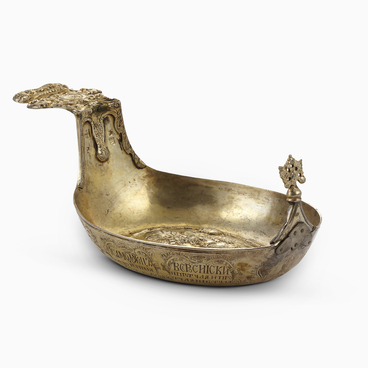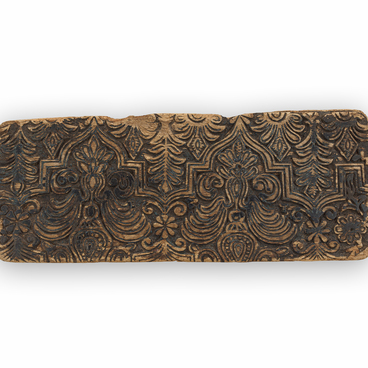The coronet (koruna) is a festive maiden or wedding headdress, known in Russia since the 16th century.
There are several varieties of such headdresses. One of the most elegant types of a koruna is an openwork, multifaceted coronet, embroidered with gold cord, pearls, rhinestones and semiprecious stones. Such headdresses were common in the 18th and 19th centuries in the north-west of the Russian Empire: in the Arkhangelsk, Novgorod, St. Petersburg, Olonets, and Pskov governorates.
Coronets were made of many layers of glued canvas and cardboard. The front part of the headdress was completely covered with embellishments in the technique of “embroidery on white cord”. In this method, a cotton cord is sewn onto the fabric, and threads of pearls are then “embroidered” onto the cord. This technique made the ornament more vivid and emphasized the unique pearl luster, creating a more expressive and convex relief.
On the back, the coronet could be decorated with magnificent silk bows fastened with brooches. A light veil could cover it from the front.
The headdress presented in the Museum of Russian Heritage is called “a crenelated coronet” due to its shape, which resembles a “crown” with an ornate, carved “crenelated circlet”. A circlet, a koruna and a headband are all types of traditional female headdress. The coronet with five projecting rosettes is decorated with red cloth, two strips of gold embroidery, and two ribbons woven from intertwining metallic thread. The front is also embroidered with gold, decorated with plaques, inserts, foil, sequins, beads, and metallic thread. Ribbons crafted from brocade, damask, and silk are fastened to the back and adorned at the ends with tassels and gold embellishments.
A young woman wore such a headdress during the matchmaking process. In the Arkhangelsk and Vologda governorates, brides wore it on their wedding day. Silk ribbons were decorated with embroidery with an S-shaped pattern. The S-shaped pattern symbolized swans. According to another interpretation, it was the bride and groom who were represented in the form of two swans facing each other. People still see the swan as a symbol of a happy marriage.
Young women from wealthy families wore such a headdress to complement their most expensive festive outfit — a silk, brocade or damask sundress with gauze, silk or brocade sleeves.





